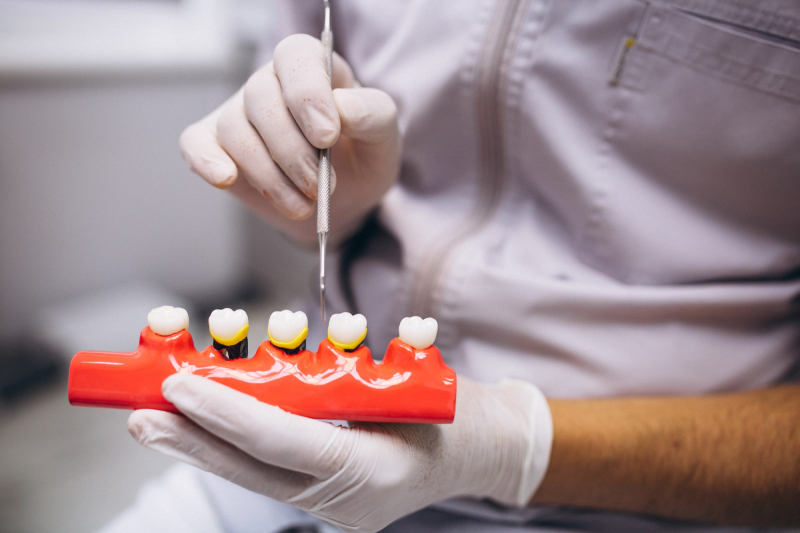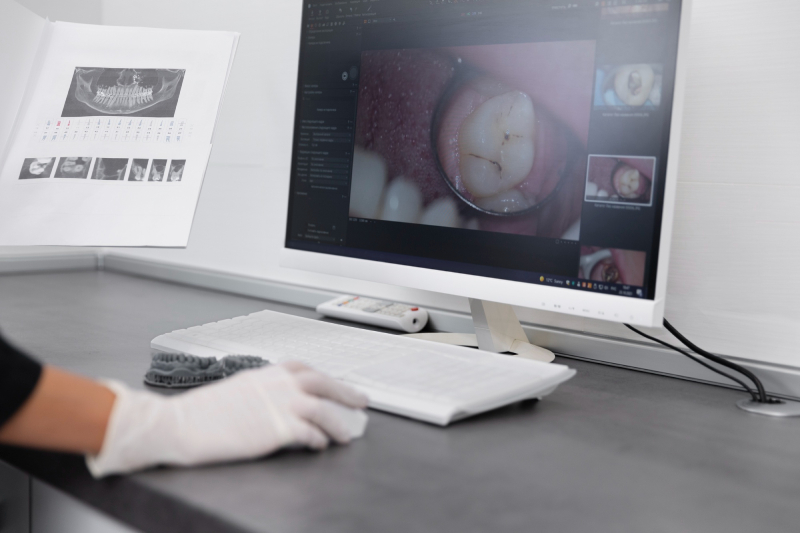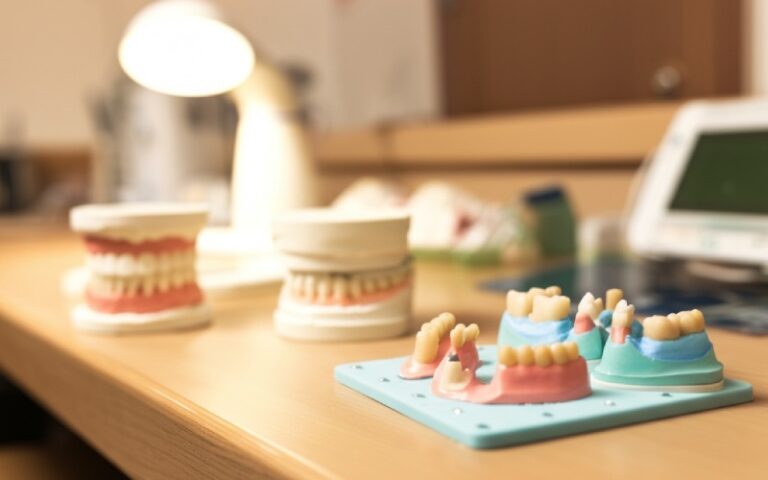
Emax Press vs. Milled Crowns: Which Option Gives the Best Fit for Your Smile?
We’ve all heard someone say, “I had a dental crown put in, but it doesn’t feel quite right.” Maybe you’ve been there yourself, or maybe you know someone who has. It’s normal to wonder: Will my new crown hold up? Will it really protect my tooth, or could it let in problems like cavities or tooth pain?
Don’t worry—you’re not the only one who’s thought about this. Dentists and dental labs put a lot of work into making sure every crown fits just right.
One of the biggest jumps dentistry has made recently is the use of Emax crowns made from a special kind of glass ceramic called lithium disilicate. It’s both tough and good-looking. But here’s the catch—even with great material, you have a choice to make: Should your Emax crown be made by pressing (the hands-on, classic way) or by milling (the computer-guided way)?
Let’s break it down together, using our Compassionate Educator way: question, explain, guide, and help you feel confident.
Table of Contents
What Is an Emax Crown? (And Why Do People Pick It?)
Maybe you’ve seen someone with a “natural-looking” tooth fix. Chances are, you were looking at Emax. But what is it, really?
Emax is a brand name for a certain type of ceramic (lithium disilicate) dentists use to make crowns, veneers, and other repairs. It’s strong (over 400 megapascals, for the science fans), clear like glass, and can be colored to match your real teeth really well.
Why do people like Emax?
- Looks real—it’s see-through, not dull or chalky.
- Very tough—works well for both front and back teeth.
- Gentle—nice on gums and won’t hurt the teeth nearby.
- Lasts a long time—especially when the fit is solid.
Picture swapping out a broken or rotten tooth for something that’s almost impossible to tell from your own teeth. That’s what Emax can do.
Press vs. Milled Crowns: The Basics, Made Simple
Let’s keep it real: Words like “pressing” and “milling” can sound like you’re about to watch a cooking show, right?
Both ways use the same strong Emax stuff, but get there in different ways.
- Pressed Emax Crowns
Imagine a skilled baker shaping dough by hand, then baking it until it’s perfect. A lab worker makes a wax version of your crown, covers it in a special material to make a mold, heats it until the wax melts away, and then presses hot Emax into the mold so it takes on the final shape. - Milled Emax Crowns
Now think of a fancy robot using tools to carve a sculpture from a solid block. Your dentist takes a digital scan of your mouth. Then a computer-controlled machine cuts your crown from a block of Emax. It’s a lot like 3D printing—just backwards.
Both ways make strong, natural-looking crowns, but each has its own good points and weak spots, especially when it comes to fit.
Why a Crown’s “Fit” Is So Important
You might ask, “Does it really matter if the fit is just a little off?”
Yes, it does. How well a crown fits is about so much more than comfort—it’s about keeping your tooth healthy.
Here’s why a good fit matters:
- Stops cavities under the crown. Even a tiny gap lets germs sneak in and cause trouble.
- Keeps your gums calm. Crowns that don’t fit right can scrape or bug your gums, leading them to pull away or get sore.
- Helps your crown last. A tight fit spreads out the bite force and keeps the crown from cracking or slipping off.
- Prevents feeling too hot or cold. With a tight fit, there’s no space for weird sensations.
Marginal Fit:
This is the very thin space where the edge of the crown meets your tooth. If that “marginal gap” is too big (bigger than about 120 microns—which is finer than a hair), you might get gum or decay problems.
Internal Fit:
This means how closely the inside of the crown hugs your tooth. The tighter, the better.
Bottom line: The closer the crown fits your tooth, the healthier your mouth stays.

How Pressed and Milled Crowns Are Made (Step-by-Step)
Let’s look at both methods, side by side:
The Pressed Emax Process: Hands-On Skill
- Impression or Scan: Your dentist takes a mold or a scan of your tooth.
- Wax Model: In the lab, someone builds your crown out of wax first.
- Investment and Burnout: The wax gets surrounded by a special material that hardens. Then, the wax gets melted out, leaving a mold.
- High-Pressure Pressing: The hot, melted Emax glass is pushed into the mold to copy all the tiny details.
- Baking and Cooling: The new crown cools down and hardens.
- Finishing Touches: Any extra bits are cut away, the surface is smoothed and polished, and it gets a shiny glaze.
The Milled Emax Process: All-Digital
- Digital Scan: The dentist takes a scan of your tooth—no messy impressions needed.
- CAD Design: The crown is planned on a computer.
- CAM Milling: A machine carves your crown out of a solid Emax block.
- Crystallization Firing: The milled crown, which starts out soft, is baked in a hot oven so it gets hard and reaches its final look.
- Finishing & Glazing: It’s polished and gets a bit of glaze.
Which One Takes Longer?
Pressed crowns need more steps and usually take more time in the lab, so you’ll likely wait a few days.
Milled crowns—especially with new “same-day” machines—might get you a new tooth in just a few hours. You could walk out with a finished crown before your lunch break!
Comparing the Details: Which One Fits Better?
Dentists and scientists have tested both ways. So, what does the data really say?
Let’s boil it down, no need for tough language.
| Feature | Emax Press | Emax Milled | What It Means |
|---|---|---|---|
| Marginal Gap (fit at edge) | 30–70 microns (often less) | 50–100 microns (a bit more, depends) | Both are much smaller than 120 microns (the safe zone). |
| Internal Fit | 50–150 microns | 60–200 microns | Both methods give a good fit; how the work’s done is more important. |
| Strength after baking | 400–500 MPa (super strong) | 400–500 MPa (super strong) | Both just as strong at the end. |
| Surface smoothness | Very smooth after pressing, easy to glaze | Might need more polishing | Smoother is better—less gunk sticks and easier to keep clean. |
| Tiny air bubbles (porosity) | Really low, very dense | Also good, but could have tool marks | Pressed is slightly denser, but both are good. |
So, which way is “better”?
Both are top-notch and approved by dental groups.
Pressed crowns might fit a touch better at the edge, but the difference is so small it doesn’t matter when both are made well. In fact, studies in places like the Journal of Prosthetic Dentistry say: “Both methods make crowns that fit great and last years.”
What makes the real difference?
- The dentist and lab worker’s skill
- How good the impression or scan is
- The care taken with prepping the tooth, cementing the crown, and the finish
If these are right, both pressed and milled crowns will look good and work great.
Beyond the Fit: Other Stuff That Matters (Cost, Looks, Strength, and More)
Of course, a good fit isn’t the only thing to look at. Here’s how each one measures up in things you care about.
1. Looks (How Natural Will It Look?)
- Pressed Emax:
Famous for perfect color blends, great for tough front teeth repairs. - Milled Emax:
Also looks real! Computer design matches your real teeth, but fancy color work might need more lab time.
2. Strength and Durability
- Both: Both come out super strong—good for chewing and should last years.
- How well they fit and are glued in matters more than the method.
3. How Long Does It Take?
- Pressed:
Usually a week or two, since the lab has to do more steps. - Milled:
Can be done the same day in some cases, or just a few days by mail.
4. Cost
- Pressed:
Might cost more because of the skilled work and extra materials. - Milled:
Could be a bit cheaper because there’s less hands-on work, though the dentist’s digital tools cost a lot.
One thing to remember: These differences usually don’t make a huge change in what you pay if insurance helps. Best to ask your dentist’s office for exact prices.
5. Who’s Doing the Work? (Skill Matters Most)
It’s not the material that counts—it’s who’s making your crown.
A careful, skilled tech or dentist gets top results with either method.
A rushed job, though, can give you a crown that doesn’t fit right—no matter the process.
6. How Long Will It Last?
Both ways, if done right, give you about a 95% chance your crown will stay put for years and years.
Most problems with crowns come from your own teeth or gums, not the way the crown was made.

What Should You (and Your Dentist) Look At?
Let’s use a simple example:
Choosing how your crown is made is like picking between a master chef (pressed) and a really fancy kitchen (milled).
Both can make awesome food—if the ingredients, recipe, and care are good.
Think like this:
Pressed Emax Crowns Are Great For:
- When you really want an exact color match, especially for a front tooth.
- If your dentist works with a really good lab for hand-made ceramics.
- If you’re fine with waiting a bit or just like the classic way of doing things.
Milled Emax Crowns Are Great For:
- You want your crown done in one visit (plenty of “CEREC” offices have this).
- Your dentist uses new digital gear.
- You’d rather have fewer visits and spend less time in the chair.
- The tooth is in the back, so a perfect color match isn’t as big a deal.
Both Methods Work For:
- You just want something tough with a good fit.
- You prefer what’s been tested and liked by the American Dental Association.
Who’s This For? (Are Pressed or Milled Crowns Right for You?)
Both ways are good for most people.
Still, you might pick one or the other if:
Pressed Emax is best if:
- You want a super close color match for a front tooth.
- You have a different-shaped tooth or want the best look.
- Your lab is well-known for high-quality ceramics.
Milled Emax is best if:
- You want your new crown as soon as possible (even in just one visit).
- You don’t want to come back over and over.
- You’re happy with digital scans instead of messy impressions.
Not So Good For:
- Either way isn’t great if your gums are in bad shape or can’t be kept dry for a crown.
- People who grind their teeth really hard might need a different material like zirconia—but Emax is still fine for most.
Key Things to Remember for a Great Crown
A quick recap to keep things simple:
- Emax crowns are a top pick for natural-looking, strong, lasting fixes.
- Both pressed and milled ways are excellent, with little difference in fit—both are way better than older types.
- Skill is what matters most. The dentist’s (and lab’s) attention to detail is key.
- Both give a fit well within what’s safe, so problems are rare if the work is done right.
- Time and cost are where you might notice differences. Pressed could take longer and cost a bit more, milled might be quicker and a bit less.
- Talk to your dentist about what you want and need—both choices are safe.
What to Do Next and Good Questions for Your Dentist
Knowledge gives you power. Here’s how to make sure you feel good about your choice:
Before your crown visit, ask:
- Are you using pressed, milled, or both types of Emax crowns?
- How do you make sure my crown fits tight?
- Will you make my crown in the office, or do you send it out?
- How do you match the color for a natural look?
- Can I really get my crown the same day if I need it?
- What are the ups and downs for my kind of tooth?
At home, keep your crown in shape by:
- Brushing twice daily with soft bristles and fluoride toothpaste
- Flossing every day to keep the edges clean
- Seeing your dentist for regular check-ups and cleanings
And remember, pressed or milled—your Emax crown, done with care, should last and keep your smile healthy for years.
Sources:
- American Dental Association (ADA): https://www.ada.org/
- Journal of Prosthetic Dentistry
- International Journal of Prosthodontics
- Ivoclar Vivadent (Emax material data)
Got a dental question? Ask us next time you visit—we want you to have clear answers and a smile you love.








